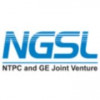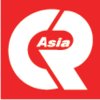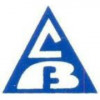Filter interviews by
Sanmarg Projects Mechanical Engineer Interview Questions and Answers
Sanmarg Projects Mechanical Engineer Interview Experiences
2 interviews found
I applied via Company Website and was interviewed in Apr 2023. There were 3 interview rounds.

(1 Question)
- Q1. Resume Related questions
(3 Questions)
- Q1. Depending upon ur experience
- Q2. Work related questions
- Q3. Principal of UT
- Ans.
UT stands for Ultrasonic Testing, a non-destructive testing method used in engineering.
UT uses high frequency sound waves to detect flaws or defects in materials.
It is commonly used in industries like aerospace, automotive, and manufacturing.
UT can be used to inspect welds, pipelines, and structural components.
The results of UT are displayed in a visual representation called a C-scan or B-scan.

(2 Questions)
- Q1. For Oil &gas knowledge fo API 1104 ,B 31.8 , 31.8 ASME SEC IX AND NDT ASME SEC VI AND PROJECT PROCEDURE EXPERIENCE FOR GAS PIPELINE
- Q2. What is difference between psl 2 and psl 1 Which pipe used for gas pipeline
- Ans.
PSL 2 has stricter requirements than PSL 1. Gas pipelines use PSL 2 pipes.
PSL 2 has higher minimum yield strength and stricter chemical composition requirements than PSL 1
PSL 2 also has non-destructive inspection requirements
Gas pipelines use PSL 2 pipes due to their higher strength and durability
PSL 1 pipes are typically used for low-pressure applications
Interview Preparation Tips
Top trending discussions






Interview questions from similar companies

Mechanical Engineer Interview Questions & Answers
NTPC GE Power Servicesposted on 1 Oct 2022
I applied via Company Website and was interviewed before Oct 2021. There were 3 interview rounds.

(4 Questions)
- Q1. How many stages of Turbine blades
- Ans.
The number of stages of turbine blades varies depending on the specific turbine design and application.
Turbine blades are used in various applications such as gas turbines, steam turbines, and wind turbines.
The number of stages in a turbine refers to the number of sets of rotating and stationary blades.
Each stage of turbine blades helps to extract energy from the fluid passing through the turbine.
Gas turbines typically...
- Q2. Total number of bearing in turbine
- Ans.
The total number of bearings in a turbine varies depending on its design and size.
The number of bearings in a turbine can range from a few to several dozen.
The main purpose of bearings in a turbine is to support rotating components and reduce friction.
Different types of bearings, such as ball bearings or roller bearings, may be used in a turbine.
Large turbines, such as those used in power plants, typically have more be...
- Q3. Bearing oil clearances
- Q4. Where, firstly steam is enter in Turbine
- Ans.
Steam enters the turbine at the high-pressure stage.
Steam enters the turbine at the high-pressure stage to maximize energy extraction.
The high-pressure steam is directed into the turbine blades, causing them to rotate.
The steam then passes through multiple stages of the turbine, gradually losing pressure and expanding.
At each stage, the steam's energy is converted into mechanical work to drive the turbine.
Finally, the ...
(1 Question)
- Q1. You belongs from How many family members Salary
Interview Preparation Tips
Listen carefully
Think then reply
Read technical data

Mechanical Engineer Interview Questions & Answers
NTPC GE Power Servicesposted on 21 Oct 2021
Interview Questionnaire
1 Question
- Q1. Mill,Feedar & fan
Interview Preparation Tips
Mill, Feedar mentanance

I applied via Walk-in and was interviewed before Oct 2020. There were 3 interview rounds.
Interview Questionnaire
1 Question
- Q1. What is responsibility of mechanical engineer
Interview Preparation Tips

I applied via Walk-in and was interviewed before Jan 2024. There was 1 interview round.
(5 Questions)
- Q1. Why Conveyor use in Matterials Handling
- Ans.
Conveyors are used in materials handling to efficiently transport goods or materials from one place to another.
Conveyors help in automating the transportation process, increasing efficiency and reducing manual labor.
They can handle a wide range of materials, from small parts to heavy items.
Conveyors can be customized to fit specific needs, such as incline or decline conveyors for elevation changes.
Examples of conveyors...
- Q2. What is preventive maintenance
- Ans.
Preventive maintenance is the practice of regularly inspecting, servicing, and replacing parts to prevent equipment failure.
Regularly scheduled inspections and maintenance tasks are performed to prevent breakdowns
Replacement of worn out parts before they fail to avoid costly repairs
Helps in increasing the lifespan of equipment and reducing downtime
Examples include changing oil in a car engine, cleaning air filters in H
- Q3. How to calculate Belt length
- Ans.
Belt length can be calculated using the formula: L = 2C + (πD)
Measure the distance around the pulleys (C)
Measure the diameter of the larger pulley (D)
Use the formula L = 2C + (πD) to calculate the belt length
For example, if C = 30 inches and D = 10 inches, then L = 2(30) + (3.14)(10) = 60 + 31.4 = 91.4 inches
- Q4. Types of Pully used in any conveyor
- Ans.
Types of pulleys commonly used in conveyors include drive pulleys, idler pulleys, and snub pulleys.
Drive pulleys are used to transmit power from the motor to the conveyor belt.
Idler pulleys are used to support and guide the conveyor belt.
Snub pulleys are used to increase the angle of wrap around the drive pulley to improve traction.
Other types of pulleys may include bend pulleys, take-up pulleys, and wing pulleys.
Diffe...
- Q5. Types of joint use in Engineering
- Ans.
Various types of joints used in engineering include welded joints, bolted joints, riveted joints, and adhesive joints.
Welded joints involve fusing two materials together using heat or pressure.
Bolted joints use bolts and nuts to secure two materials together.
Riveted joints involve using rivets to connect two materials.
Adhesive joints use adhesives to bond materials together.

Senior Engineer Interview Questions & Answers
NTPC GE Power Servicesposted on 30 Jan 2023
I applied via Naukri.com and was interviewed before Jan 2022. There were 3 interview rounds.

(1 Question)
- Q1. Basic questions regarding past experiences.
(1 Question)
- Q1. Questions based on JD and resume were asked by the panel of interviewers.
Interview Preparation Tips
But be careful during salary negotiations. Once you got in , there will be very little increment.

Senior Engineer Interview Questions & Answers
NTPC GE Power Servicesposted on 14 Jun 2024
(2 Questions)
- Q1. Relay protection
- Q2. Transformers protection

I applied via Recruitment Consulltant and was interviewed before Oct 2021. There were 3 interview rounds.

(1 Question)
- Q1. About the Work Experience
(2 Questions)
- Q1. Interview done by Regional head and Plant Incharge
- Q2. Major Fuctions description related to work experience
Interview Preparation Tips

I applied via Recruitment Consulltant and was interviewed in Jan 2022. There were 3 interview rounds.

(1 Question)
- Q1. Question are Related to job and work for experience candidates.
(1 Question)
- Q1. Dessucused about location and salary
Interview Preparation Tips
- Technical
Sanmarg Projects Interview FAQs
Tell us how to improve this page.
Sanmarg Projects Interviews By Designations
- Sanmarg Projects Civil Engineer Interview Questions
- Sanmarg Projects HSE Engineer Interview Questions
- Sanmarg Projects Mechanical Engineer Interview Questions
- Sanmarg Projects Cathodic Protection Engineer Interview Questions
- Sanmarg Projects Electrical Technician Interview Questions
- Sanmarg Projects Project Incharge Interview Questions
- Sanmarg Projects Quality Engineer Interview Questions
- Sanmarg Projects Operator Interview Questions
- Show more
Interview Questions for Popular Designations
- Mechanical Maintenance Engineer Interview Questions
- Diploma Mechanical Engineer Interview Questions
- Mechanical Technician Interview Questions
- Senior Engineer Mechanical Interview Questions
- Mechanical Supervisor Interview Questions
- Junior Mechanical Engineer Interview Questions
- Mechanical Fitter Interview Questions
- Mechanical Maintenance Fitter Interview Questions
- Show more
Sanmarg Projects Mechanical Engineer Interview Process
based on 1 interview
Interview experience
Interview Questions from Similar Companies
Sanmarg Projects Mechanical Engineer Reviews and Ratings
based on 13 reviews
Rating in categories
|
Mechanical Engineer
46
salaries
| ₹3 L/yr - ₹7.8 L/yr |
|
Civil Engineer
26
salaries
| ₹4.8 L/yr - ₹7.2 L/yr |
|
Electrical Engineer
26
salaries
| ₹2.2 L/yr - ₹7.2 L/yr |
|
Instrumentation Technician
21
salaries
| ₹2.5 L/yr - ₹4.4 L/yr |
|
Mechanical Technician
18
salaries
| ₹2.2 L/yr - ₹4.2 L/yr |

Linde India

NBTC GROUP

Madina Group

ACB (India)
- Home >
- Interviews >
- Sanmarg Projects Interview Questions >
- Sanmarg Projects Mechanical Engineer Interview Questions














